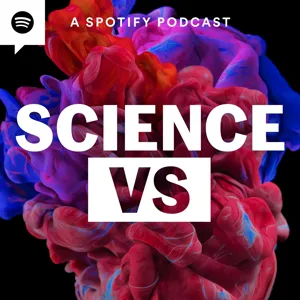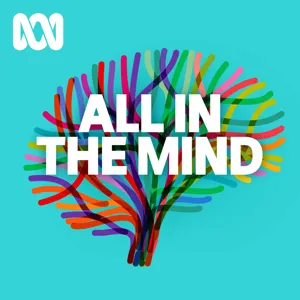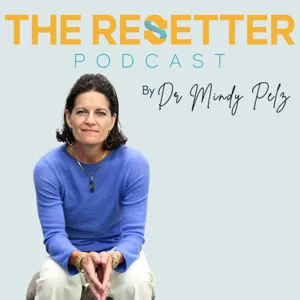Podcast Summary
Understanding the facts behind abortion debates: Most abortions occur early in pregnancy, are generally safe for women, and are based on accurate information, not political rhetoric or personal biases.
The debate over abortion in the US, particularly in the context of the midterm elections, is centered around the potential impact of the Supreme Court and political leadership on women's reproductive rights. While emotions and moral beliefs play a significant role, it's crucial to separate facts from fiction. For instance, most abortions occur early in pregnancy when the fetus cannot feel pain, and the procedure itself is generally safe for women. The misconceptions surrounding abortion, including when it's performed and its impact on women, can be debunked through scientific research. It's essential to approach this topic with accurate information rather than political rhetoric or personal biases.
Formation of Fetus: A Burrito or a Sandwich?: In the first few weeks of pregnancy, the zygote rapidly divides and forms a fetus, starting as a 'burrito' or a 'sandwich' shape, with a fully functional heart by around 6 weeks, although its size remains microscopic and its ability to feel pain is debated.
During the first few weeks of pregnancy, a zygote, which is a tiny ball of cells, undergoes rapid cell division and starts to fold in on itself, forming a distinctive shape. This process, described as a "burrito" or a "sandwich," results in the formation of the fetus. At this stage, the embryo is less than a millimeter in size, and many women are not yet aware they are pregnant. The estimation of pregnancy progression is imprecise, and doctors often use gestational age, which starts from the first day of the last menstrual period. By around 6 weeks, the embryo has grown into a fetus and has a microscopic, fully functional heart, capable of pumping blood. Despite its tiny size, the fetus cannot be seen with the naked eye, yet it can potentially feel pain, a topic of much debate in discussions around abortion laws.
Fetal pain development timeline: Pain receptors form at 6 weeks but cannot sense pain, nerve fibers appear at 10 weeks but connections to brain not complete until 18-20 weeks, cortex necessary for understanding pain doesn't fully develop until end of second trimester, most abortions in US occur before fetus can feel pain.
The ability for a fetus to feel pain is a complex process that involves the formation of pain receptors, the development of nerve fibers and the maturation of the brain. According to expert Amita, pain receptors begin to form around 6 weeks, but they cannot sense pain yet. Nerve fibers that can detect pain start to appear around 10 weeks, but the wiring that connects these signals to the spinal cord and brain does not fully develop until around 18-20 weeks. The cortex, which is necessary for understanding pain, does not fully develop until the end of the second trimester. Based on this information, most abortions in the US occur before the fetus is capable of feeling pain. Therefore, the debate surrounding fetal pain and abortion legislation is a complex issue that requires a nuanced understanding of fetal development.
Methods for Abortions during First Trimester: Two common methods for abortions during the first trimester are medication abortion and surgical abortion. In medication abortion, pills block hormones and mimic miscarriage, while surgical abortion involves physically removing the pregnancy through the vagina and cervix.
During the first trimester of pregnancy, which lasts for the first 12 weeks, most abortions are performed using two methods: medication abortion and surgical abortion. In a medication abortion, a woman takes pills called mifepristone and misoprostol to terminate the pregnancy. Mifepristone blocks the hormone progesterone, preventing the body from recognizing pregnancy, while misoprostol mimics the process of miscarriage, causing the uterus to expel the pregnancy. These pills should not be confused with birth control or the morning-after pill, which prevent fertilization rather than ending an existing pregnancy. In a surgical abortion, a doctor physically removes the pregnancy through the vagina and cervix, opening the cervix first to access the uterus. It is important to note that these procedures are not the same as a cesarean section, as they do not involve cutting or opening any new spaces in the body.
Abortion procedures depend on pregnancy stage: Early abortions use dilators and suction, later ones involve D&E with forceps, and third trimester abortions are rare
Abortion procedures can vary greatly depending on the stage of pregnancy. For early abortions, dilators are used to open the cervix, and the pregnancy is removed using suction or instruments like tongs or graspers. The process is quick, taking only 30 seconds to 2 minutes. For later abortions, the fetus is too large for suction, so instruments like forceps are used for dilation and evacuation (D&E), which involves removing the fetus in parts. The process can be graphic, and the resulting fetal parts look like miniature human forms. Lisa, a healthcare professional, shared her experience of performing an abortion on a woman who was as pregnant as she was, feeling her own baby kick during the procedure, which was a powerful and emotional experience for her. Abortions in the third trimester are extremely rare.
Abortions in third trimester due to complications or abnormalities: Risks of third trimester abortions are relatively low, and most women seeking them have already given birth to a child
Third trimester abortions, which account for 1.3% of abortions in the US, are mostly performed due to serious complications or fetal abnormalities. These procedures are more complex than earlier abortions, involving injecting the fetus with a heart-stopping drug and inducing labor. Abortions can be categorized into medication (pills) and surgical (suction and forceps) methods, neither of which involves cutting a woman open. While some may view abortions as risky, the actual risks are relatively low, and the majority of women seeking abortions are in their twenties, thirties, and have already given birth to at least one child. At Whole Women's Health clinic in Texas, reporter Heather Rogers found that the demographic in the waiting room matched this data.
Reasons for Abortions: Financial, Timing, Partner-Related, and Religious: Approximately 40% of women seeking abortions did so due to financial constraints, while other reasons included timing not being right and partner-related issues. Significant numbers of women obtaining abortions identified as Catholic, mainline protestant, or evangelical protestant.
Women from various backgrounds, including religious ones, get abortions for a range of reasons, with financial difficulties being the most common. According to a 2013 study, approximately 40% of women seeking abortions did so due to financial constraints. Other reasons included the timing not being right and partner-related issues. Additionally, some women reported experiencing physical abuse from their partners. The religious aspect of abortion is often overlooked, but data from the Guttmacher Institute shows that around a quarter of women obtaining abortions identified as Catholic, and significant numbers identified as mainline protestant or evangelical protestant. This suggests that the issue of abortion is complex and multifaceted, and that it affects women from all walks of life. The risks involved in getting an abortion were also explored in Texas, but that discussion will be covered in subsequent parts of the podcast.
Doctors in Texas must disclose certain risks during abortion consultations: Despite scientific evidence showing no link between abortion and infertility, doctors in Texas are required by law to disclose this risk to patients. Providers must ensure clear and accurate information to help patients make informed decisions.
During an abortion consultation in Texas, doctors are required by law to disclose certain risks, including infertility and breast cancer, to their patients. However, the way these risks are presented can be perceived as alarming and potentially misleading. For instance, during an observation at a clinic in San Antonio, the abortion provider, Dr. Bhavat Kumar, was seen reading the state-mandated script in a hurried and almost dismissive manner, without fully addressing patients' concerns. The infertility risk, in particular, can be particularly distressing for women. However, scientific evidence suggests that having an abortion in a safe and legal setting does not increase the risk of infertility. According to the UK's College of Obstetricians and Gynaecologists, there is no proven association between abortion and infertility. Therefore, it is crucial for healthcare providers to provide accurate and clear information about the risks and benefits of abortion to ensure that patients make informed decisions.
Abortions do not increase risk of breast cancer or infertility: Abortions are generally safe with minimal short-term side effects and do not increase a woman's risk of breast cancer, infertility, or depression in the long-term.
While there are potential short-term side effects from having an abortion such as cramping, stomach pain, and bleeding, the evidence suggests that abortions do not increase a woman's risk of developing breast cancer or becoming infertile. Furthermore, abortions are generally safer than childbirth and even some common medical procedures. Regarding the emotional impact, a study called the Turnaway Study followed women for five years after their abortions and found no increased risk of depression compared to carrying an unwanted pregnancy to term. It's important to note that personal experiences can vary, but the evidence suggests that the vast majority of women do not experience long-term negative emotional consequences from having an abortion.
No significant mental health harms for women who have had abortions: Studies show no mental health harm for women who had abortions, and they may be better off financially and educationally in the long run. Women's reasons for seeking abortions are based on their readiness for a baby.
Studies, including Diana Greene Foster's, have found no significant mental health harms for women who have had abortions compared to those who carried their pregnancies to term. Over several years, these women showed similar levels of depression, anxiety, and post-traumatic stress disorder. Furthermore, research suggests that women who get abortions may be better off financially and educationally in the long run. However, differences have been found between women who got abortions and those who didn't but wanted one, such as employment status and poverty levels. For women in abusive relationships, having an abortion can lead to a decrease in violence from their partners due to severed ties. Overall, women's reasons for seeking abortions are realistic, and their decisions are often based on their readiness for a baby. Despite common misconceptions portrayed in pop culture, the research tells a different story.
Abortion and Mental Health: Research contradicts belief that abortions increase depression or anxiety risk, but denial of abortion may lead to negative outcomes.
The scientific evidence does not support the notion that women who have abortions are at a higher risk for depression or anxiety than those who don't. However, research shows that women who are denied an abortion may face negative consequences such as less money, less education, and fewer job opportunities. Abortions, typically performed in the first trimester using pills or suction, do not involve cutting a woman open and do not increase the risk of breast cancer or infertility. While some women may experience guilt or depression after an abortion, the majority do not, and those who have an abortion that they want are not more likely to experience depression than those who carry their pregnancies to term.






